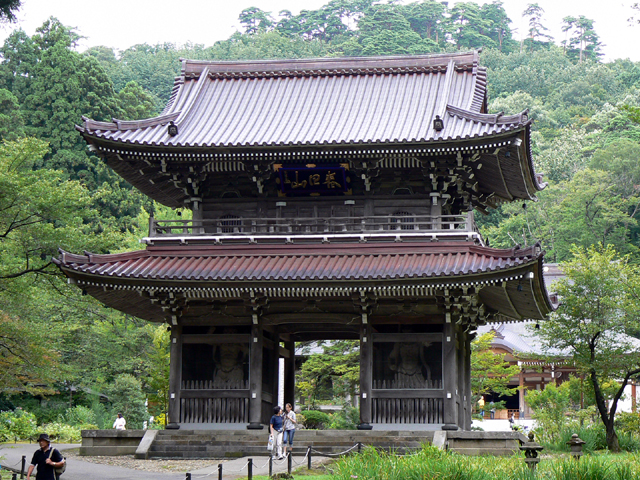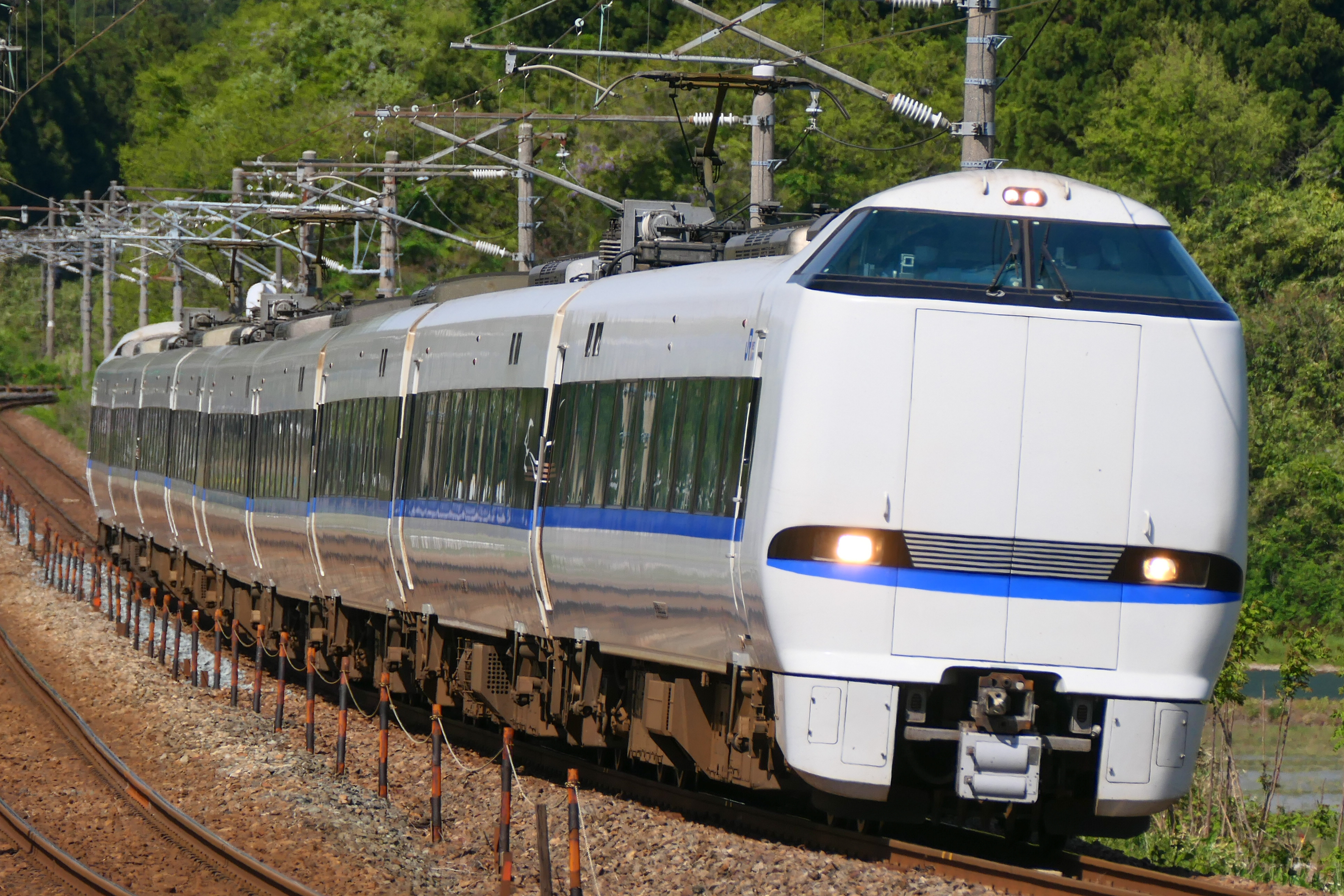|
Hokuetsu Express
The is a Japanese railway line in Niigata Prefecture that runs from Muikamachi in Minamiuonuma City to Saigata in Jōetsu City. It is the sole railway line operated by . Construction of the line first began in 1968 by the Japanese National Railways (JNR), and was initially referred to as the . However, the construction of the line was plagued by numerous delays, and was finally completed as a third sector line on 23 March 1997, including the Akakura Tunnel, the longest on a non-JR line. Unlike most other third sector company lines, the Hokuhoku Line made steady profits after its opening, as the former ''Hakutaka'' Limited Express train service, which travelled using the line, served as the principal link between the Tokyo metropolitan area and the Hokuriku region until the opening of the Hokuriku Shinkansen in 2015. The line's former maximum speed limit of allowed the ''Hakutaka'' to become the fastest narrow gauge train service in the country, matched only by the standar ... [...More Info...] [...Related Items...] OR: [Wikipedia] [Google] [Baidu] |
Niigata Prefecture
is a Prefectures of Japan, prefecture in the Chūbu region of Honshu of Japan. Niigata Prefecture has a population of 2,227,496 (1 July 2019) and is the List of Japanese prefectures by area, fifth-largest prefecture of Japan by geographic area at . Niigata Prefecture borders Toyama Prefecture and Nagano Prefecture to the southwest, Gunma Prefecture to the south, Fukushima Prefecture to the east, and Yamagata Prefecture to the northeast. Niigata, Niigata, Niigata is the capital and largest city of Niigata Prefecture, with other major cities including Nagaoka, Niigata, Nagaoka, Jōetsu, Niigata, Jōetsu, and Sanjō, Niigata, Sanjō. Niigata Prefecture contains the Niigata Major Metropolitan Area centered on Niigata with a population of 1,395,612, the largest metropolitan area on the Sea of Japan coast and the twelfth-largest in Japan. Niigata Prefecture is part of the historic Hokuriku region and features Sado, Niigata, Sado Island, the sixth largest island of Japan in area follo ... [...More Info...] [...Related Items...] OR: [Wikipedia] [Google] [Baidu] |
Arai Station (Niigata)
is a railway station in the city of Myōkō, Niigata, Japan, operated by the third-sector operator Echigo Tokimeki Railway. It is also a freight terminal for the Japan Freight Railway Company. Lines Arai Station is served by the 37.7 km Echigo Tokimeki Railway Myōkō Haneuma Line from to , and is located 21.0 kilometers from the starting point of the line at and 58.3 kilometers from . Two return '' Shirayuki'' limited express services and two limited-stop "Rapid" services operate daily between Arai and . Station layout The station has one side platform and one island platform connected by a footbridge. The station is staffed. Niigata-Arai-Sta-Platform1.JPG, The platforms in January 2010 Niigata-Arai-Sta-Platform2.JPG, The platforms in January 2010 ETR_Arai_Station_Concourse.jpg, Station interior, April 2019 Platforms Adjacent stations History Arai Station opened on 15 August 1886. With the privatization of Japanese National Railways (JNR) on 1 April 19 ... [...More Info...] [...Related Items...] OR: [Wikipedia] [Google] [Baidu] |
Passing Loop
A passing loop (UK usage) or passing siding (North America) (also called a crossing loop, crossing place, refuge loop or, colloquially, a hole) is a place on a single line railway or tramway, often located at or near a station, where trains or trams travelling in opposite directions can pass each other. Trains/trams going in the same direction can also overtake, provided that the signalling arrangement allows it. A passing loop is double-ended and connected to the main track at both ends, though a dead end siding known as a refuge siding, which is much less convenient, can be used. A similar arrangement is used on the gauntlet track of cable railways and funiculars, and in passing places on single-track roads. Ideally, the loop should be longer than all trains needing to cross at that point. Unless the loop is of sufficient length to be dynamic, the first train to arrive must stop or move very slowly, while the second to arrive may pass at speed. If one train is too long for ... [...More Info...] [...Related Items...] OR: [Wikipedia] [Google] [Baidu] |
683 Series
The is a dual-voltage electric multiple unit (EMU) train type operated by West Japan Railway Company (JR-West) and Hokuetsu Express on limited express services in Japan since 2001. Variants * 683-0 series (''Thunderbird'') * 683-1000 series (''Thunderbird'') * 683-2000 series (''Thunderbird'', former '' Shirasagi'') * 683-3000 series (''Thunderbird'', former ''Shirasagi'') * 683-4000 series (''Thunderbird'') * 683-5000 series (''Thunderbird'') * 683-8000 series (''Shirasagi'', former Hokuetsu Express ''Hakutaka'') File:JR West 683 series EMU 421.JPG, 683-4000 series Operations JR-West * ''Thunderbird'' * '' Shirasagi'' * ''Biwako Express'' * ''Ohayō Express'' * ''Oyasumi Express'' * ''Dinostar'' (from 14 March 2015) * '' Noto Kagaribi'' (from 14 March 2015) * ''Kuroshio'' (from 13 March 2015) Hokuetsu Express * ''Hakutaka'' (until 12 March 2015) JR Central * ''Home Liner Ōgaki'' rapid service (until 13 March 2015) * ''Home Liner Sekigahara'' rapid service (until 13 Marc ... [...More Info...] [...Related Items...] OR: [Wikipedia] [Google] [Baidu] |
681 Series
__NOTOC__ Year 681 ( DCLXXXI) was a common year starting on Tuesday (link will display the full calendar) of the Julian calendar. The denomination 681 for this year has been used since the early medieval period, when the Anno Domini calendar era became the prevalent method in Europe for naming years. Events By place Byzantine Empire * Byzantine–Bulgarian War: Emperor Constantine IV is forced to acknowledge the Bulgar state in Moesia, and to pay protection money to avoid further inroads into Byzantine Thrace. Consequently, Constantine creates the Theme of Thrace of the Byzantine Empire (located in the south-eastern Balkans). * Autumn – A military revolt breaks out in the Anatolic Theme (modern Turkey). The Byzantine army marches to Chrysopolis, and sends a delegation across the straits of the Hellespont to Constantinople, demanding that the two brothers should remain co-emperors alongside Constantine IV. * September/November – Constantine IV has his brothers H ... [...More Info...] [...Related Items...] OR: [Wikipedia] [Google] [Baidu] |
Kubiki Station
is a railway station on the Hokuetsu Express Hokuhoku Line in the city of Jōetsu, Niigata, Japan. Lines Kubiki Station is served by the Hokuetsu Express Hokuhoku Line and is 53.6 kilometers from the starting point of the line at . Station layout The station has two elevated opposed side platforms connected to a dome-shaped station building underneath. The station is unattended. Platforms File:くびき駅舎2 04-08-27.JPG, Rear view of Kubiki Station File:Kubikieki-1.JPG, The platforms in March 2012 Adjacent stations History The station opened on 22 March 1997 with the opening of the Hokuhoku Line. Passenger statistics In fiscal 2015, the station was used by an average of 85 passengers daily (boarding passengers only). Surrounding area *Hakusan Jinja See also * List of railway stations in Japan The links below contain all of the 8579 railway stations in Japan. External links {{Portal bar, Japan, Trains * Railway stations Japan Japan ( ja, 日 ... [...More Info...] [...Related Items...] OR: [Wikipedia] [Google] [Baidu] |
Viaduct
A viaduct is a specific type of bridge that consists of a series of arches, piers or columns supporting a long elevated railway or road. Typically a viaduct connects two points of roughly equal elevation, allowing direct overpass across a wide valley, road, river, or other low-lying terrain features and obstacles. The term ''viaduct'' is derived from the Latin ''via'' meaning "road", and ''ducere'' meaning "to lead". It is a 19th-century derivation from an analogy with ancient Roman aqueducts. Like the Roman aqueducts, many early viaducts comprised a series of arches of roughly equal length. Over land The longest in antiquity may have been the Pont Serme which crossed wide marshes in southern France. At its longest point, it measured 2,679 meters with a width of 22 meters. Viaducts are commonly used in many cities that are railroad hubs, such as Chicago, Birmingham, London and Manchester. These viaducts cross the large railroad yards that are needed for freight trains there, ... [...More Info...] [...Related Items...] OR: [Wikipedia] [Google] [Baidu] |
Passing Loop
A passing loop (UK usage) or passing siding (North America) (also called a crossing loop, crossing place, refuge loop or, colloquially, a hole) is a place on a single line railway or tramway, often located at or near a station, where trains or trams travelling in opposite directions can pass each other. Trains/trams going in the same direction can also overtake, provided that the signalling arrangement allows it. A passing loop is double-ended and connected to the main track at both ends, though a dead end siding known as a refuge siding, which is much less convenient, can be used. A similar arrangement is used on the gauntlet track of cable railways and funiculars, and in passing places on single-track roads. Ideally, the loop should be longer than all trains needing to cross at that point. Unless the loop is of sufficient length to be dynamic, the first train to arrive must stop or move very slowly, while the second to arrive may pass at speed. If one train is too long for ... [...More Info...] [...Related Items...] OR: [Wikipedia] [Google] [Baidu] |
Tōkamachi Station
is a railway station located in the city of Tōkamachi, Niigata, operated jointly by the East Japan Railway Company (JR East) and the Public–private partnership, third sector Hokuetsu Express Hokuhoku Line, Hokuetsu Express. Lines Tōkamachi Station is a station on the Iiyama Line, and is located 75.3 kilometers from the starting point of the line at . It is also a station for the Hokuetsu Express Hokuhoku Line, Hokuhoku Line and is located 15.9 kilometers from the terminus of the line at Muikamachi Station. Station layout The JR portion of the station has a single side platform and island platforms serving three ground-level tracks connected by a footbridge. The station has a ''Midori no Madoguchi'' staffed ticket office. The Hokuetsu Express portion of the station has a single elevated island platform serving two tracks. JR East Hokuetsu Express History Tōkamachi Station opened on 15 November 1927. Following the privatization of Japanese National Railways (JNR) on 1 ... [...More Info...] [...Related Items...] OR: [Wikipedia] [Google] [Baidu] |




